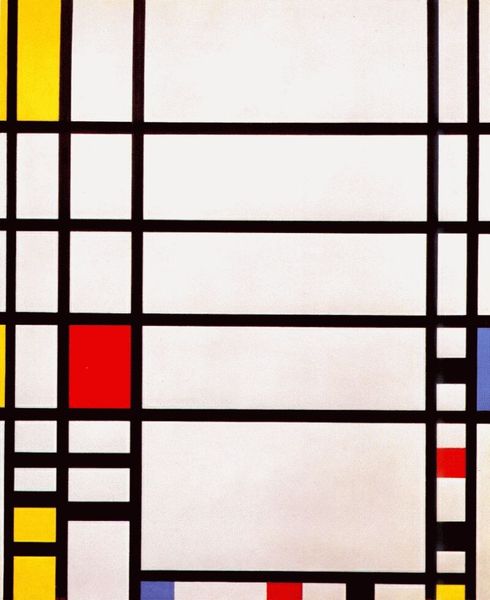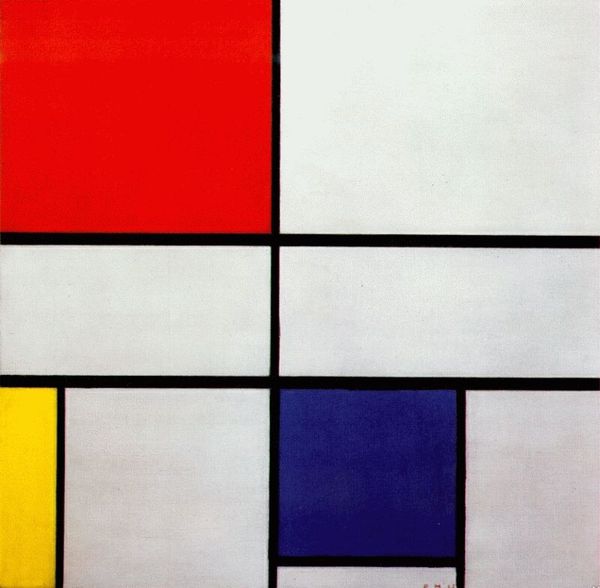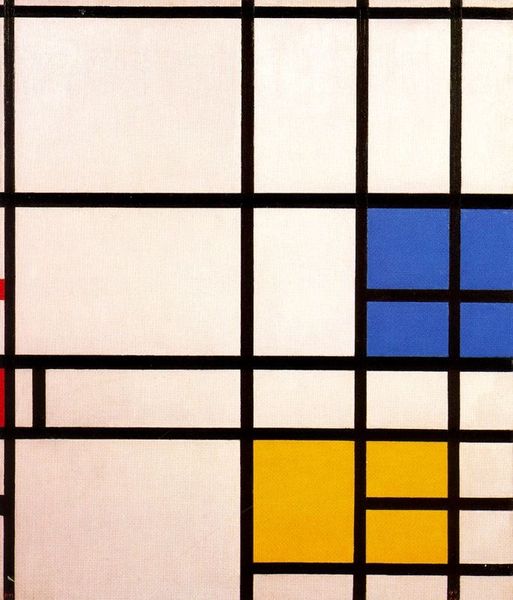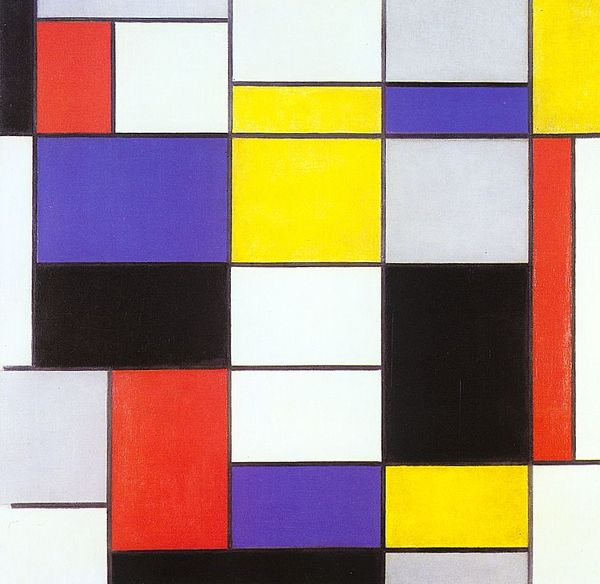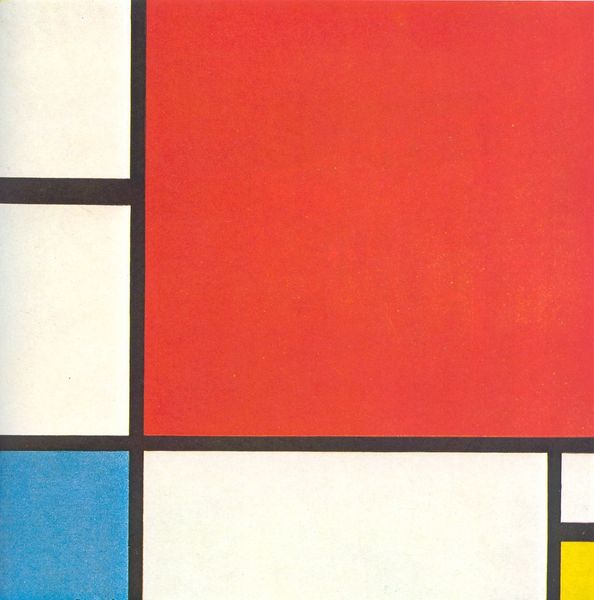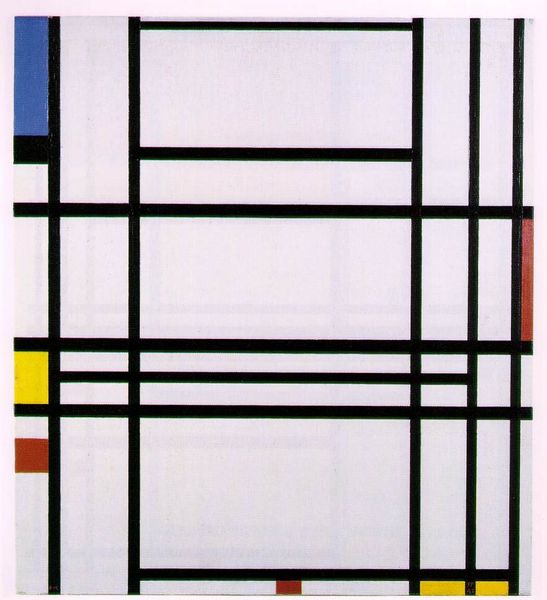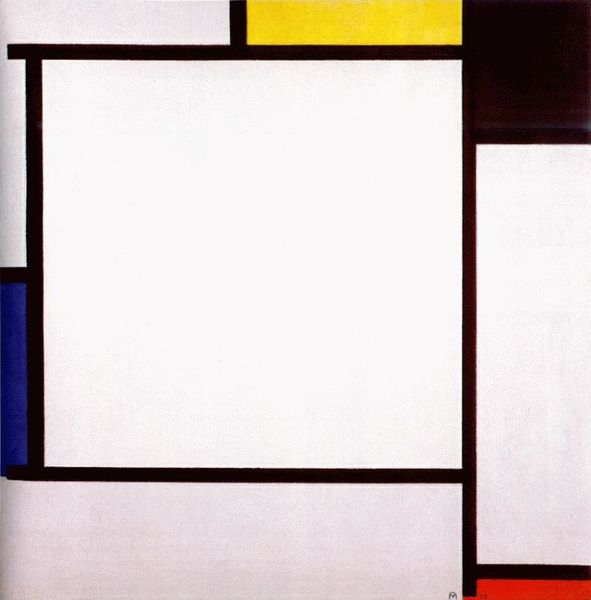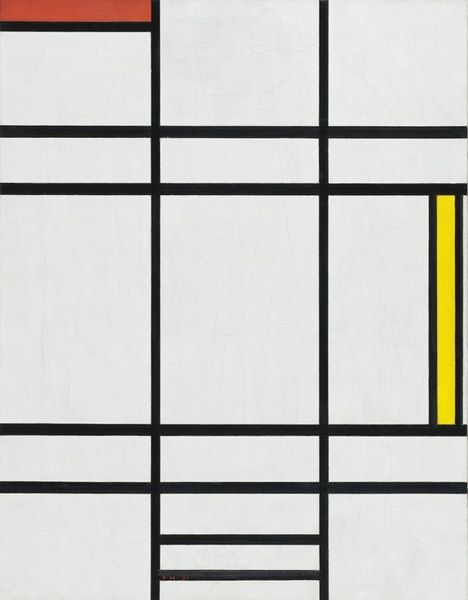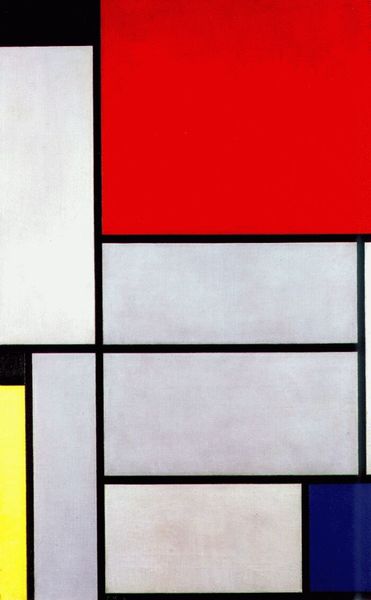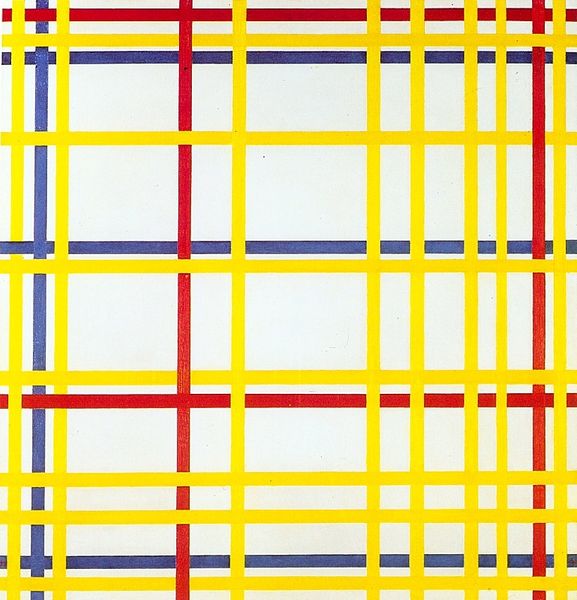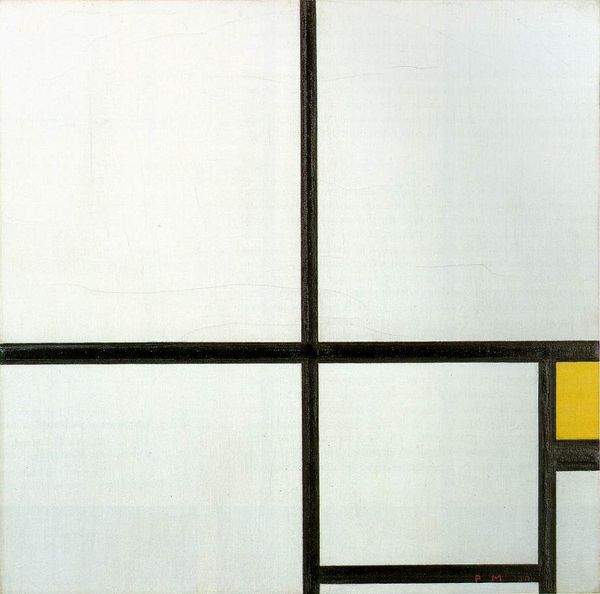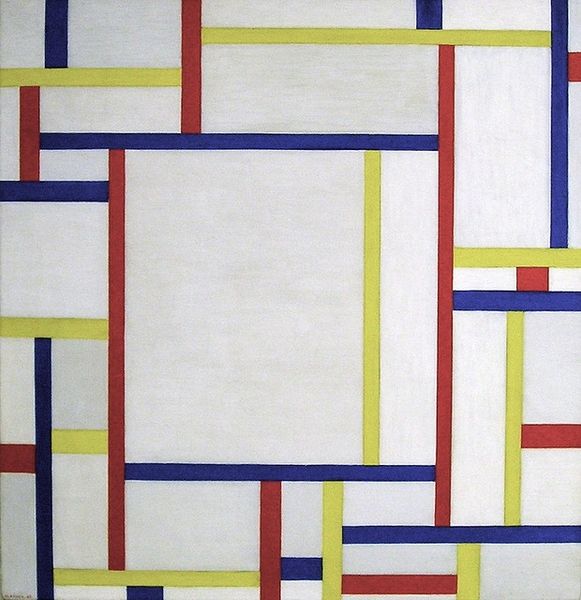
painting, acrylic-paint
#
de-stijl
#
painting
#
op art
#
acrylic-paint
#
geometric
#
abstraction
#
line
#
modernism
Copyright: Public domain
Curator: This is Piet Mondrian’s "Place de la Concorde," painted in 1943. It’s an acrylic on canvas, very much in his signature De Stijl style. Editor: My first impression? It’s… optimistic, I guess? Like looking at city grids but with a lightness that defies the seriousness of city planning. There's something so utterly pleasant about the composition here, and that yellow just sings. Curator: Indeed. It's important to remember the socio-political context. Mondrian created this during wartime, while exiled in New York. It’s a radical form of abstraction but speaks to the human desire for order and balance in times of chaos. The painting suggests hope. Editor: Right, but it's like controlled chaos, you know? He wasn't just throwing colors onto canvas; each line and color placement feels so deliberate, but I am almost overwhelmed by the possibilities each decision holds. Almost anyone can look at it and decide to continue his color game elsewhere, the image inspires creative game. Curator: Well, Mondrian's artistic theories aimed at the reduction of form to its most basic elements. The black lines define the structure, the white spaces offer clarity, and those pops of primary color bring, as you say, optimism, and dynamism, suggesting the vitality of modern urban life. De Stijl rejected overtly decorative or emotional expression, remember. Editor: But isn't that why it's so compelling? It claims to reject emotion, yet I find it brimming with a kind of quiet joy. It's like a perfectly organized closet that unexpectedly sparks joy because everything's in its place, and you just feel settled somehow. You're allowed, perhaps, to superimpose your own feelings onto this image. Curator: Yes, and I would even claim that that’s part of the De Stijl agenda: to promote rational utopias. Editor: So, it seems, despite my own intuitive reaction here, both the work’s order and vibrancy invite the eye and imagination to dance through the grid, which can be a form of hope during darker times. Curator: Precisely. "Place de la Concorde" remains a fascinating window into how even in the midst of upheaval, the impulse towards beauty and order persists. Editor: Absolutely. It just whispers, "Everything is, and will be, in its place," which, frankly, I desperately want to believe is true.
Comments
No comments
Be the first to comment and join the conversation on the ultimate creative platform.
